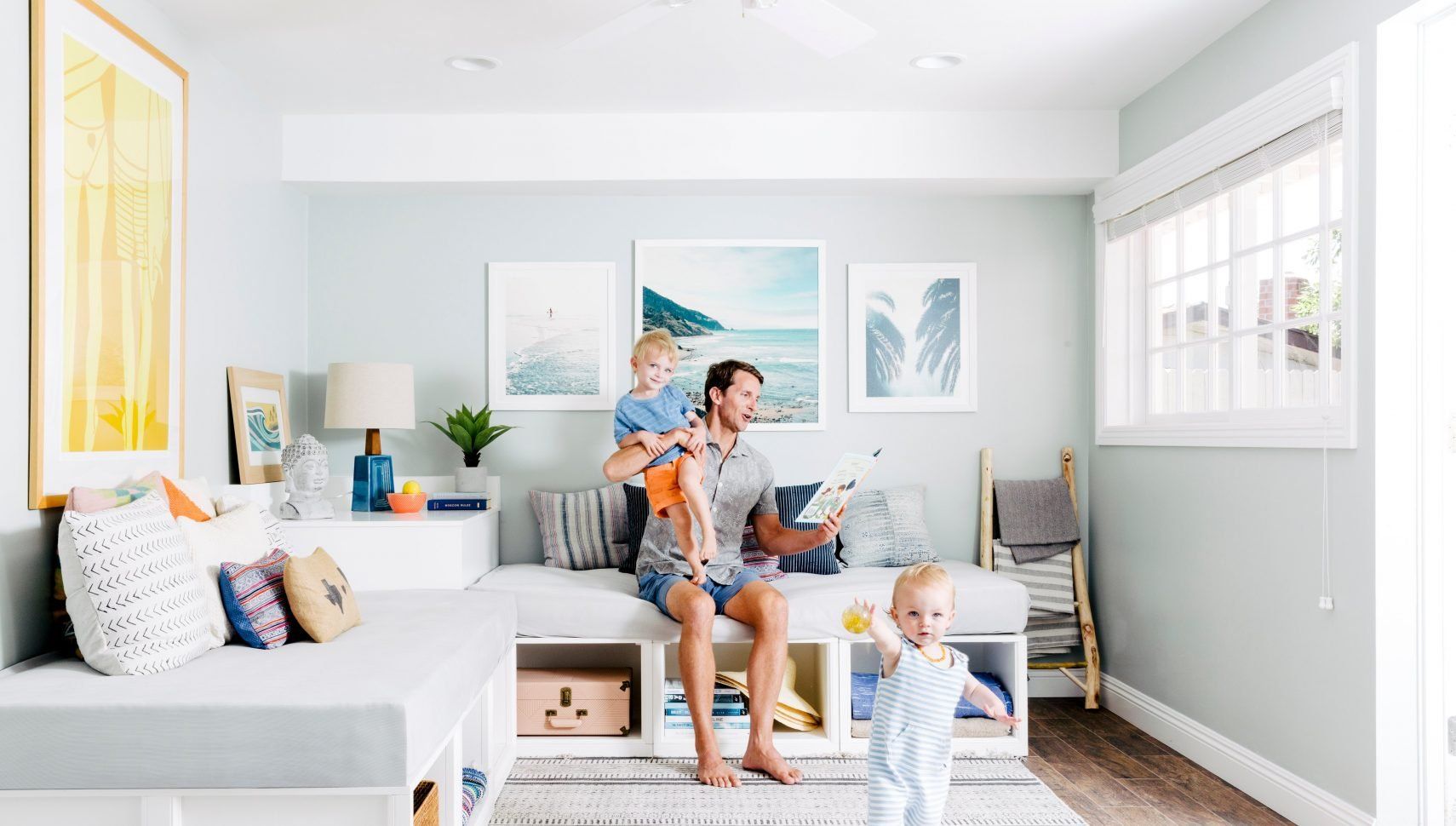

Designing a living space that balances both children’s needs and aesthetic appeal can be challenging for many parents. Creating an environment that nurtures creativity while maintaining sophistication requires careful planning and innovative solutions. Let’s learn more about this topic below with Dinosaur Game.
A well-designed kid-friendly space goes beyond merely childproofing your home. It’s about creating an environment that encourages development, learning, and safe exploration while maintaining the overall style of your home. Consider incorporating elements that can grow with your child, avoiding the need for frequent major renovations as they age.
The key is to strike a perfect balance between functionality and aesthetics. Choose furniture pieces that serve multiple purposes, such as storage ottomans or modular seating arrangements. These versatile pieces can adapt to changing needs while keeping the space organized and visually appealing.
Read more: Decluttering Tips That Actually Stick
Storage is crucial in maintaining an organized and stylish living space with children. Invest in furniture pieces that offer hidden storage compartments, such as coffee tables with drawers or window seats with built-in storage. These solutions help keep toys and games readily accessible while maintaining a clutter-free appearance.
Consider implementing a rotation system for toys, keeping only a selection out at a time while storing others away. This not only helps maintain order but also keeps children engaged with their toys for longer periods. Use decorative baskets, boxes, or custom-built shelving units that complement your interior design while providing practical storage solutions.
Establish specific zones within your living space for different activities. A dedicated play area can help contain mess and create boundaries while allowing children to feel they have their own special space. Use area rugs to define these zones and add soft, washable cushions or bean bags for comfortable seating.
Consider incorporating educational elements into the play area design. Wall-mounted educational posters, world maps, or interactive wall decals can serve as both decorative elements and learning tools. Ensure the space promotes both independent play and family interaction.
When selecting furniture, prioritize pieces with rounded corners and sturdy construction. Look for items made from durable, easy-to-clean materials that can withstand the wear and tear of daily use. Consider furniture with slip-covered upholstery that can be easily washed or replaced when needed.
Choose appropriate heights for tables and seating to accommodate both adults and children. Multi-functional furniture pieces, such as adjustable-height tables or stackable chairs, can adapt to various activities and age groups while maintaining a cohesive design aesthetic.
Create a sophisticated yet playful atmosphere by carefully selecting colors and patterns. Instead of limiting yourself to traditional primary colors, explore modern palettes that combine neutral bases with strategic pops of color. This approach allows for easier updates as your child’s preferences change.
Incorporate patterns through removable elements like throw pillows, curtains, or area rugs. This allows for seasonal updates and trend-following without major investments. Consider using washable wallpaper or paint finishes that can withstand occasional marks and are easy to clean.
Implement a layered lighting approach to accommodate different activities throughout the day. Include ambient lighting for general illumination, task lighting for homework or reading areas, and accent lighting to highlight decorative elements. Consider installing dimmer switches to adjust lighting levels as needed.
Choose child-safe lighting fixtures and ensure all electrical outlets are properly covered. LED strip lighting can add a fun element while being safe and energy-efficient. Position lighting to eliminate shadows and create a warm, welcoming atmosphere.
Transform your living space into a learning environment by incorporating educational elements in stylish ways. Create a reading nook with floating shelves displaying books at child-height, or install a magnetic wall panel painted to match your decor for displaying artwork and educational materials.
Consider adding interactive elements like a kid-sized art station or a built-in desk area that can grow with your child. These features can be designed to complement your existing decor while providing valuable learning opportunities.
Read more: Best Natural Products for a Non-Toxic Home
Establish daily cleanup routines and create easy-to-follow organization systems. Label storage containers with pictures for younger children and text for older ones. Implement a “one-in-one-out” rule for toys and games to prevent accumulation and maintain order.
Choose materials and finishes that are easy to clean and maintain. Consider using indoor-outdoor fabrics for upholstery and washable paint finishes for walls. Regular maintenance will help preserve both the functionality and appearance of your living space.
Design your space with flexibility in mind to accommodate changing needs as children grow. Choose furniture pieces that can serve multiple purposes and be repurposed over time. Consider modular systems that can be reconfigured to meet evolving requirements.
Create spaces that can transition from play areas to homework stations or teenage hangout spots. This forward-thinking approach helps maintain the longevity of your design investments while supporting your child’s development at every stage.
Creating a kid-friendly and stylish living space requires thoughtful planning and creative solutions. By focusing on versatile furniture, smart storage solutions, and adaptable design elements, you can craft an environment that serves both practical and aesthetic purposes. Remember that the key to success lies in finding the right balance between functionality and style, ensuring your space remains beautiful and welcoming for all family members while supporting your children’s growth and development.